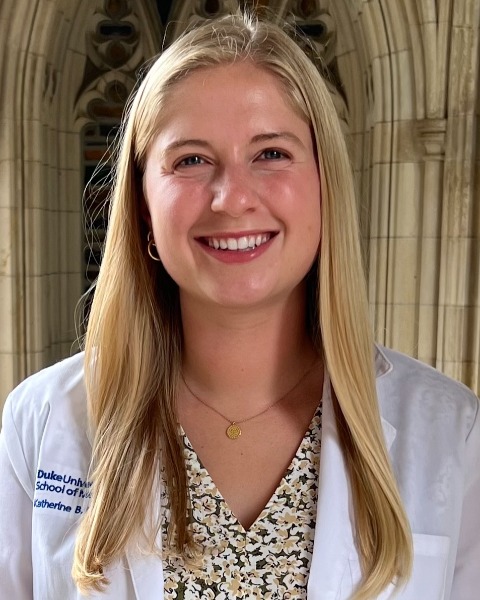Neonatology
Session: Neonatal General 2 Works in Progress
WIP 114 - Cerebrospinal Fluid Composition of Infants with Ischemic Stroke
Sunday, May 5, 2024
3:30 PM - 6:00 PM ET
Poster Number: WIP 114
Publication Number: WIP 114.2386
Publication Number: WIP 114.2386

Katherine B. Daniel, MS (she/her/hers)
Medical Student
Duke University School of Medicine
Durham, North Carolina, United States
WIP Presenting Author(s)
Background: Neonatal ischemic stroke occurs in 1:1600-1:2300 live births and carries risk of lifelong morbidity. Strokes often present as seizures in early life, and there are few acute treatment options. Their etiology is multifactorial, but one known cause is bacterial meningitis.
In infants with neurological symptoms, stroke and bacterial meningitis are possible. To rule out meningitis, clinicians often perform a lumbar puncture. However, there is minimal research describing the cerebrospinal fluid (CSF) of infants with ischemic stroke. In particular, whether their CSF parameters differ from bacterial meningitis is unknown.
Objective: To characterize the CSF parameters of infants with ischemic stroke and compare them to those without stroke and/or bacterial meningitis.
Design/Methods: This study is approved by the Duke University Institutional Review Board as an exempt study.
We will conduct a cohort study of infants admitted to >300 neonatal intensive care units and discharged from 1997-2020 using the Pediatrix Medical Group Clinical Data Warehouse. We will focus on the first 14 postnatal days, aligned with common neonatal stroke presentation.
We will identify infants with lumbar puncture diagnosed with bacterial meningitis and stroke, where meningitis is growth of non-contaminant pathogenic bacteria in CSF culture and stroke is clinician defined. We will compare demographic and clinical attributes and CSF values of infants with stroke only, meningitis only, both conditions, and neither condition using Kruskal-Wallis, Wilcoxon, and Fisher’s exact tests where appropriate. CSF parameters include glucose, protein, and counts of white blood cells, red blood cells, lymphocytes, monocytes, and segmented neutrophils. We will perform a sensitivity analysis comparing these results to infants 0-28 days old to capture the entire diagnosis timeframe. Finally, we will repeat this analysis for viral and fungal meningitis.
The data for this analysis is readily available. Analysis will be complete in January 2024; a poster detailing this work will be finished in February 2024.
